When do cats develop adult teeth?
How can you tell and how can you support them?
In children you immediately see when their milk teeth give way to adult teeth: a smile proudly shows one or two gaps! Bit by bit, milk teeth are replaced by more permanent ones that hopefully remain intact until old age. Does the tooth fairy also visit cats? How do our cats develop permanent teeth? When do these new fangs appear and what can you do to ensure that your cat is well and that the transition goes smoothly?
We’ll answer all these questions and get to the root of everything on this topic!
Milk teeth in cats
Do young cats have milk teeth that go bye-bye as kittens get older? Yes, but it all happens a bit faster in cats! Nature makes sure that cats have the right teeth when they need them. And always in a way that’s adapted to their life cycle. During the first weeks of life, when feeding on mother’s milk, teeth are not needed for suckling. At the age of four to five weeks, kittens get their first “solid” prey from their mother. For this they need the right tool: milk teeth!
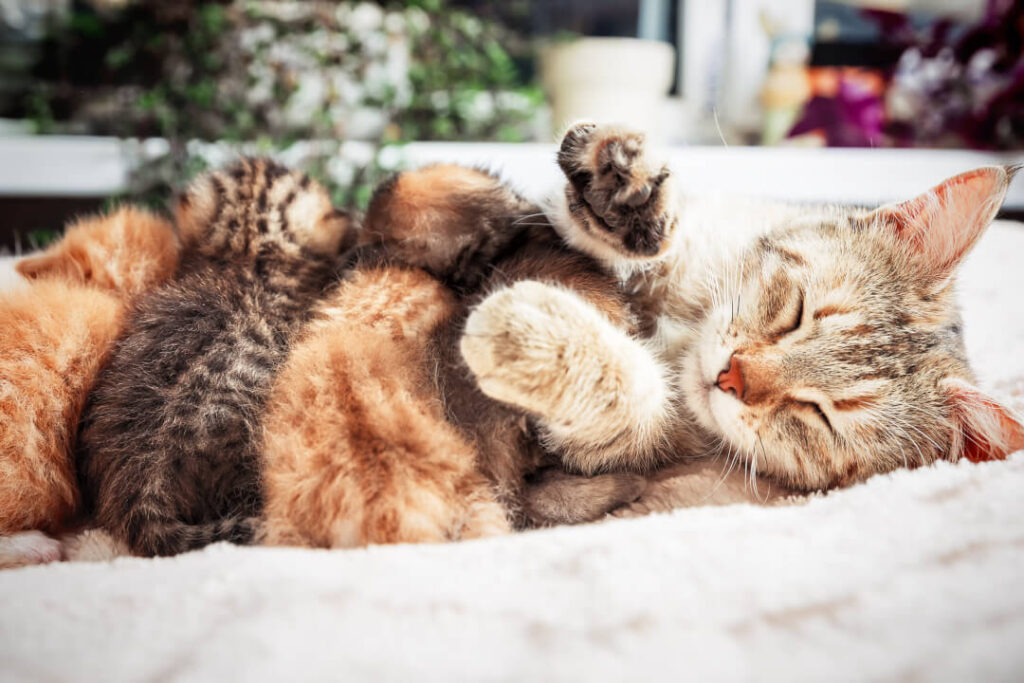
Cat’s teeth from birth
Kittens are born toothless. After two to three weeks, the first milk teeth slowly make their way. Little by little, tiny teeth appear in the cat’s jaw, as sharp as pins. Cat teeth grow and gradually more teeth are added. By the age of 12 weeks at the latest, all the milk teeth are finally there. A kitten’s milk teeth are then complete with a total of 26 teeth!
Teeth in cats
Have you ever had a close look at your kitten‘s milk teeth? You may see them when they yawn or meow, but it usually happens so quickly that you only get a glimpse! Kittens have a total of 26 milk teeth; an adult cat has 30 permanent teeth:
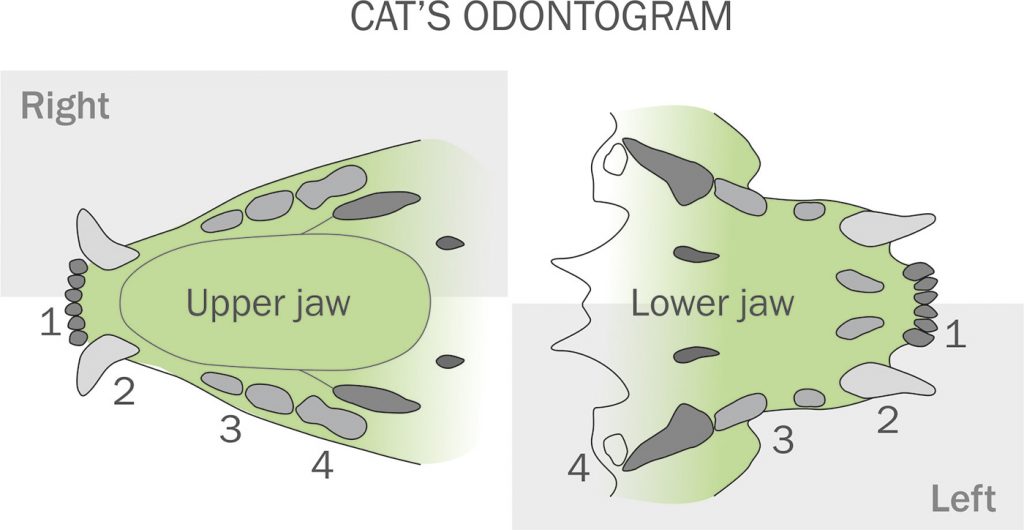
- 3 incisors per jaw
- 1 cuspid or canine tooth
- 3 molars in the front of the upper and lower jaws
- 1 posterior molar each
then the dentition is complete
When your cat starts to develop adult teeth
When adult teeth begin to push through, the transition begins. They displace the milk teeth and take their place. As a result, milk teeth have less and less support and become unstable: the wobblytooth period begins! You may not even notice this transformation. Cats either lose loose teeth when eating food and swallow them. Or they get rid of a loose tooth and you find one in your cat’s favourite spot!
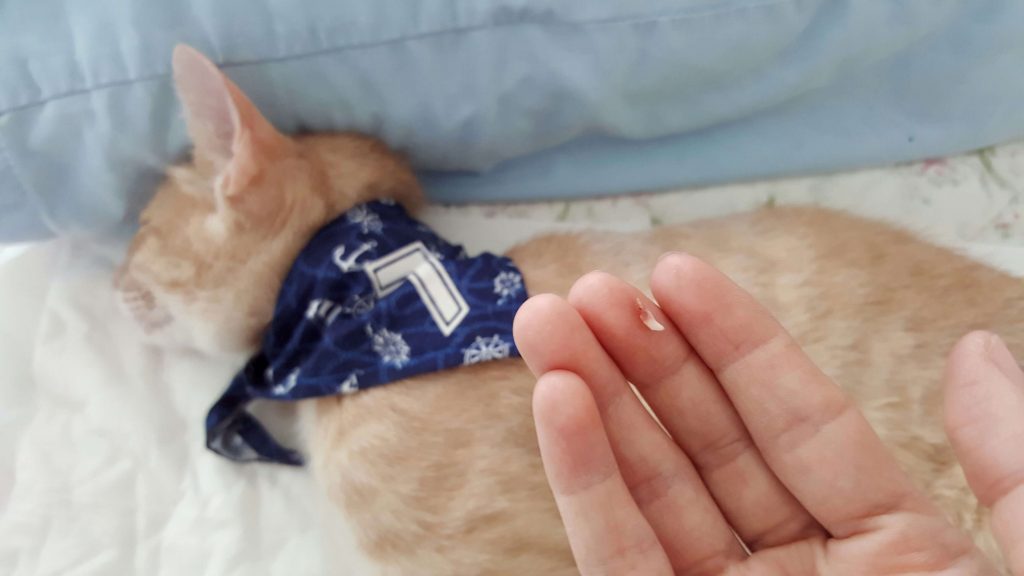
What exactly happens during the change of teeth?
When a kitten becomes an adolescent, the body changes. The development of adult teeth marks this transition. Just before the switch from liquid to solid food is due, the jaw grows larger. Four additional teeth are added: the molars at the very back, which did not exist before. The new teeth are all larger and harder than milk teeth. This allows our furry friend to capture and eat larger size meals: a larger body needs more food and energy than a smaller one! Another clever evolutionary breakthrough!
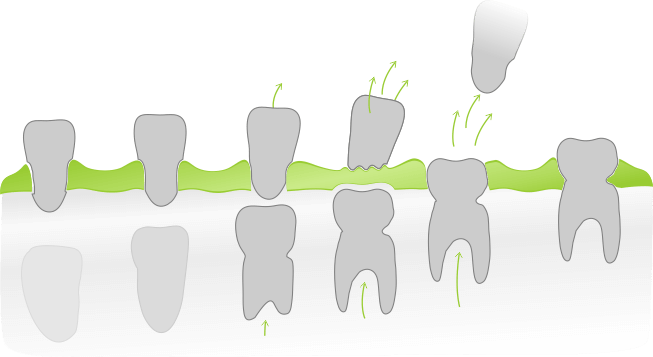
When do cats experience the change of teeth
When cats are three to four months old, the transition to adult teeth usually takes place. The new teeth, which develop below the milk teeth, push in and replace the milk teeth. At the same time, milk tooth roots atrophy. The milk teeth gradually fall out and the adult teeth then take their place. At six to seven months, the transition is usually complete. The 30 new teeth should remain as they are in the cat’s mouth until old age.
Symptoms of teeth change in cats
The period of permanent tooth growth is a time of upheaval in the truest sense of the word. When the new teeth push through, the mucous membrane of the oral cavity or the gums can swell and become inflamed. Depending on where the teeth break through and how big they are, this can be accompanied by a harmless tingling sensation. But it can also hurt quite a bit! We don’t notice it so much, but cats clearly feel there is something going on. And instinctively they try to alleviate the symptoms.
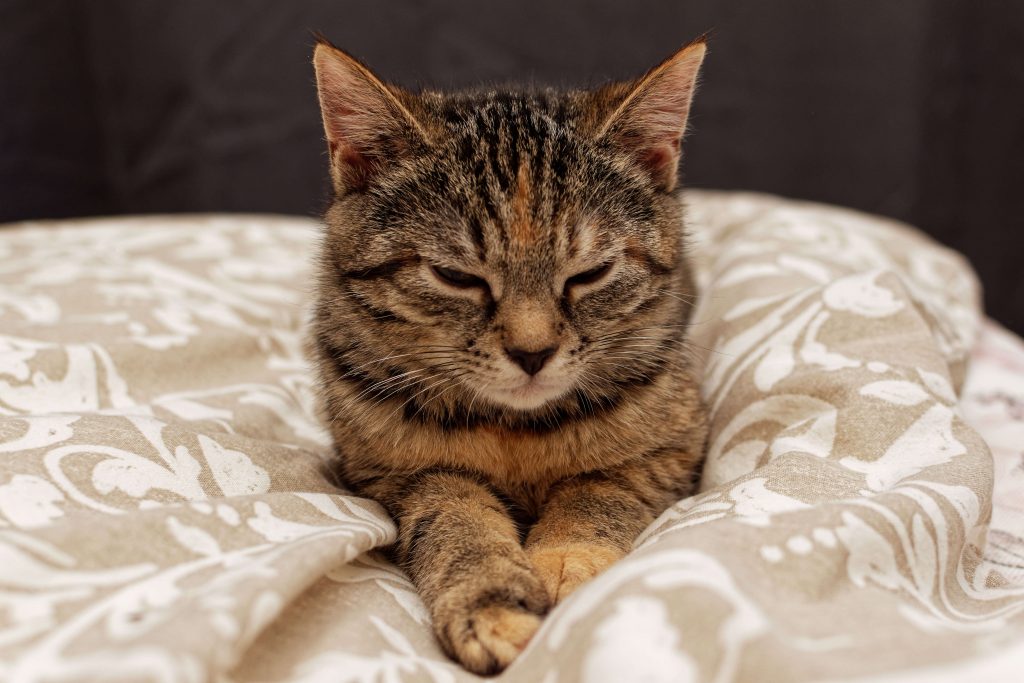
Signs that can signal teeth change in cats:
- Withdrawal – no desire to play or romp around
- Food is hardly touched or not eaten at all
- Unusual smell from the mouth
- Gnawing on solid objects
- Increased salivation
- Increased temperature
- Diarrhoea (the runs)
Drooling
In contrast to dogs, cats do not actually drool. With dogs, often the breed plays a role. Drooling is inherent in some dog breeds, but sometimes salivation is also triggered by stress or the prospect of food (like Pavlov’s dog). Cats are not droolers by nature. Increased salivation is therefore primarily related to changes in the mouth – for example, with the change of teeth.
Cat licks her gums
When something is wrong with your cat’s mouth or gums, you may notice that she often tries to lick these areas. Normally, the tongue, i.e. the “cat’s comb”, is mainly used for cleaning the fur and taking in food. Cats do not tend to use their tongues to clean their mouths and teeth. If they begin do this frequently, you can assume that there is something bothering them, which they would like to get rid of.
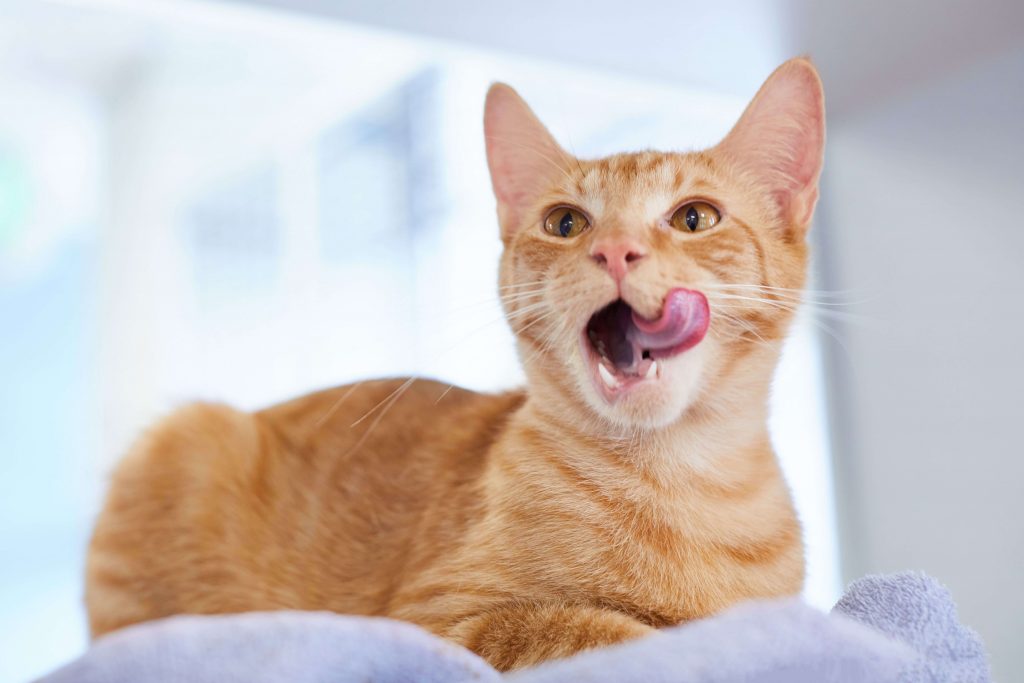
Cat shows loss of appetite
Does every bite hurt? Then you’d probably stop eating! Or limit yourself to the essentials. Lack of appetite is often an indication of teeth emerging. If gums are reddened and swollen, it is obviously more difficult to eat. It’s better to leave the hard stuff aside. But don’t worry. Even if your food-loving cat now prefers low carb eating, she won’t starve to death right away.
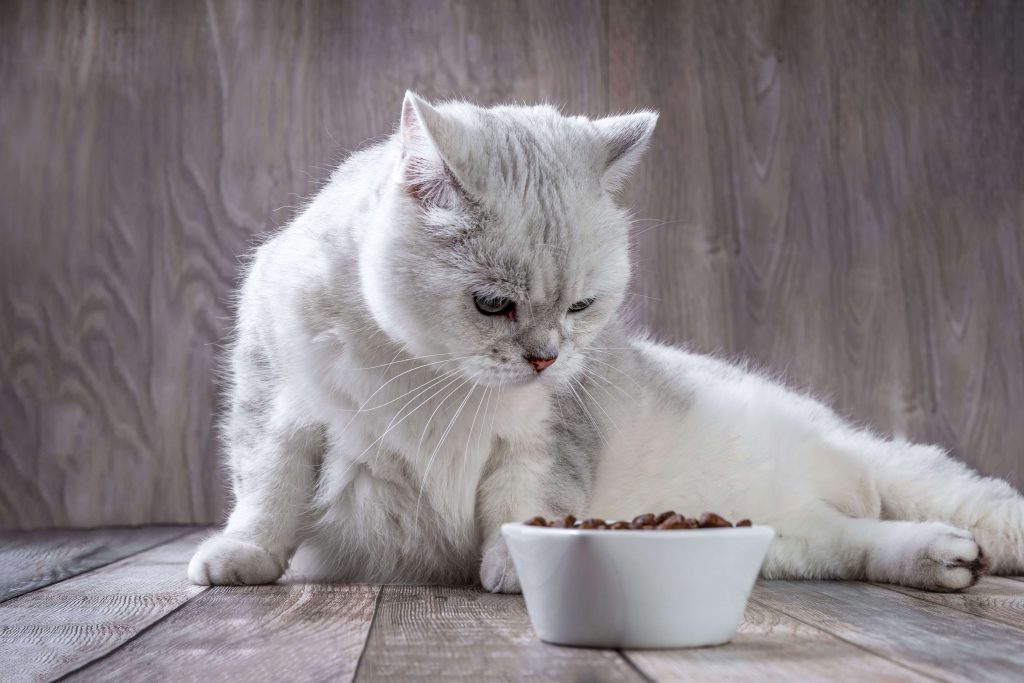
Cat has bad breath
When baby teeth give way to adult teeth, it may also create an unusual odour in your cat’s mouth, i.e. bad breath. What to do if your cat has bad breath? The culprits of the bad smell are bacteria, which love the wonderful breeding ground near loose milk teeth and trapped food. After adult teeth are in place, the bad breath usually disappears.
Support your cat during teeth change
If your cat shows the symptoms mentioned above, you can help. Sure, it’s a natural process that happens without intervention…. but you must have experienced toothaches and were grateful for a little pain relief. Your cat will also be happy if you support her and ease this period as much as possible. It doesn’t change the process itself. Change is coming and it hurts a bit. But it will be more bearable for your cat if you give her a helping hand!
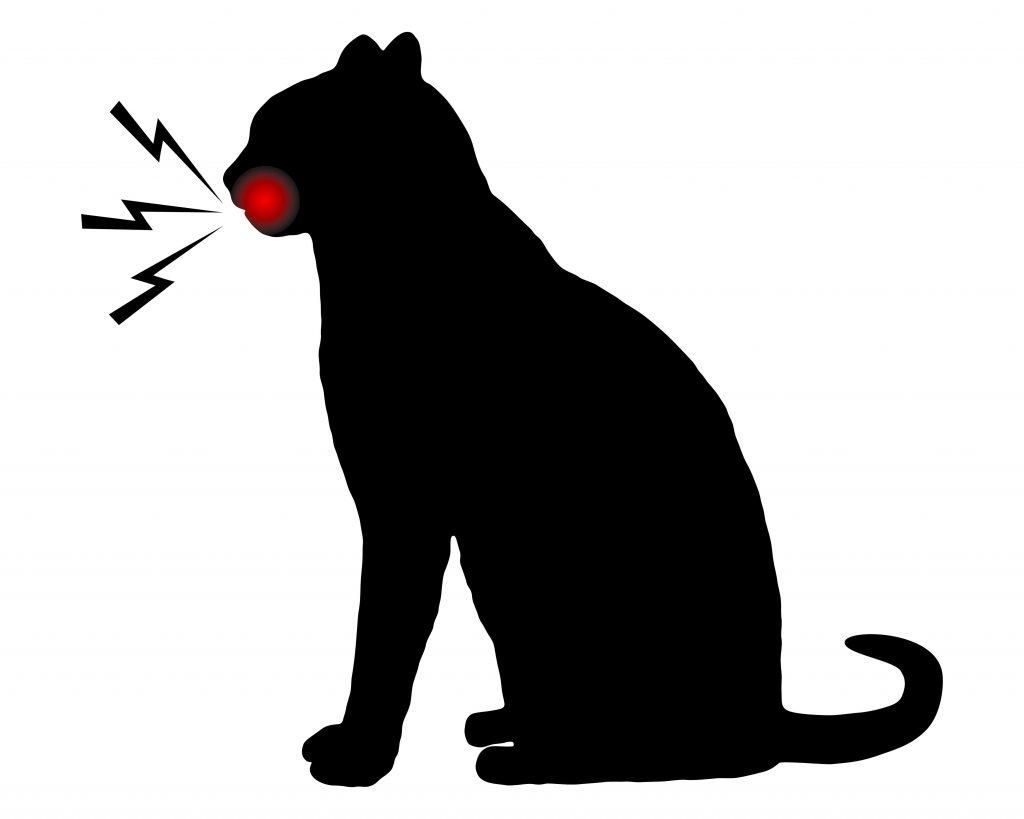
TIP: These can help tooth transition to be more pleasant for your cat:
- Cat toys for chewing
- Soft instead of hard food
- Much love and attention
Hard cat toys for chewing
When something hurts in the mouth, your cat tries to stop it. That’s why she rubs her cheeks against something that offers resistance or bites solid things. Offer suitable things for your cat to chew because there are things around the home which your cat should not bite. Distract your kitty and mix playfulness with pain relief! Offer her hard cat toys to chew on
ATTENTION!
If you play with your furry friend, you should refrain from “tug-of-war”. This could hurt your cat’s already tender jaw!
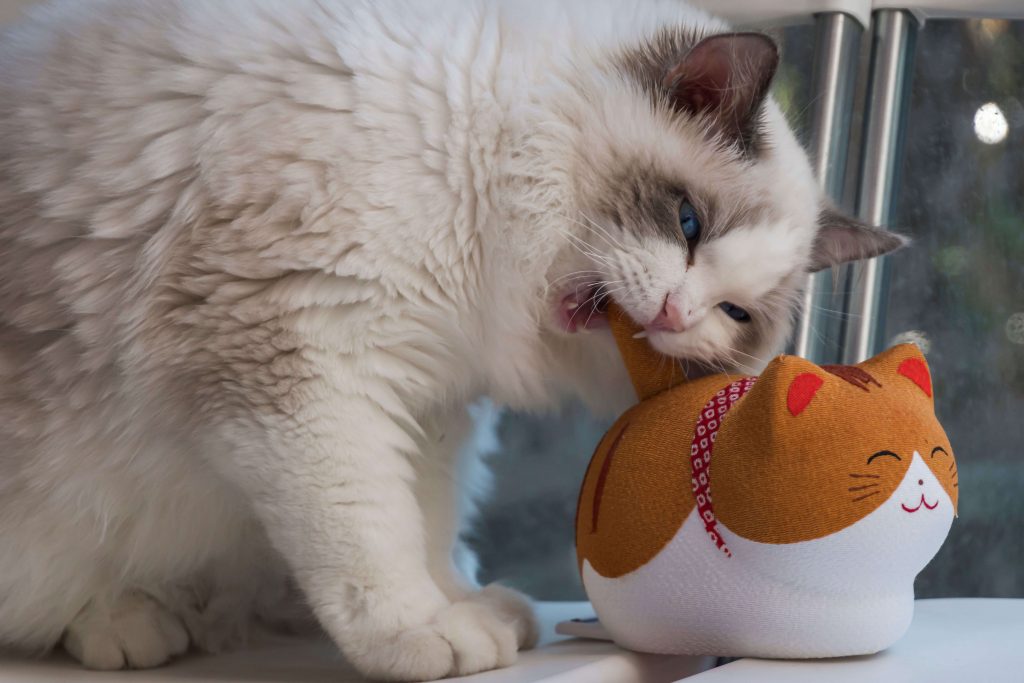
Provide soft cat food
While your kitty is teething, you should switch from dry to wet food. Even if you usually give her dry food, now is a time to provide soft cat food. Wet food is softer and easier to digest. Your cat can still eat it when her gums are sore: it goes down quickly and easily! Separately you can offer some dry food or a dry treat. A few hard chunks often successfully lever out loose wobbly teeth…
Offer strokes and cuddles
Everything seems better when someone takes you in their arms and caresses you, right? It also helps our poor pusses to feel cared for and happy. During this period, don’t spare the strokes – the more the better! But leave her alone if she wants to be by herself. Some kitties even let you gently massage their gums. But don’t force this and stop immediately if your cat doesn’t like it. And please pay attention to hand hygiene!
Problems with the change of teeth in cats
Normally, the change of teeth in cats occurs without major complications. But every now and then there are problems with teeth change. It’s like a relay race: the transfer of one to another should go perfectly, or else a smooth transition is not guaranteed. Sometimes the new teeth do not displace the milk teeth, but grow next to them; or the milk teeth are broken or defective and remain in place. Such problems should be corrected as soon as possible!
Keeping an eye on your cat’s teeth
Keep an eye on your cat’s teeth! Look for yourself, but also let a veterinarian regularlycheck your kitty’s teeth. S/he will check if everything is okay and if the teeth are where they should be. If there are any misalignments, s/he can intervene and correct them. Sometimes stubborn milk teeth have to be extracted. Too many or crooked teeth can be very unhealthy for your cat. Better to have a short intervention: a quick extraction followed by peace of mind.
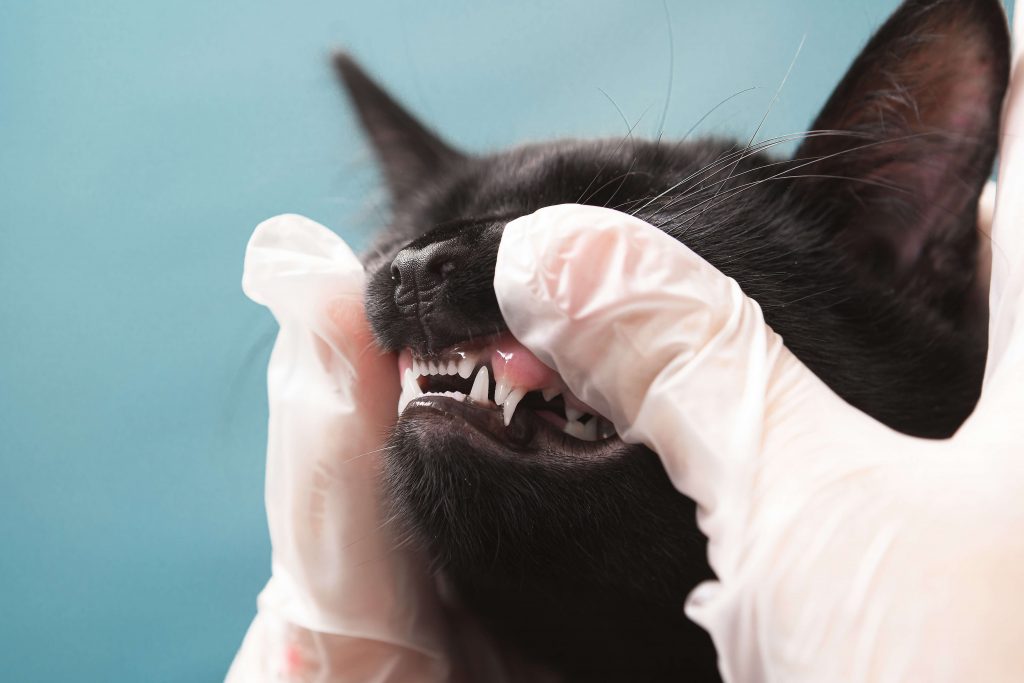
Have gum inflammation examined
Are your cat’s gums often swollen and very red? Then she could be suffering from gingivitis! The reasons why the gums become inflamed can be complex. With advanced disease, the teeth and roots can be affected. In the worst case, even the cat’s jaw bone can become damaged. You should therefore always have gum inflammation examined!
Relieve severe pain during change of teeth
Cats are brave creatures – they often suffer in silence. However, if your cat seems to be in a lot of pain during teething, you can help her with a cool teething ring – now available specifically for cats. Please do not give her medicines designed for humans! These are not made for cats and can cause serious harm or poison! Do not try to treat your cat yourself, instead ask a professional. Call a veterinarian or a veterinary clinic, and you will be recommended something animal-friendly.

